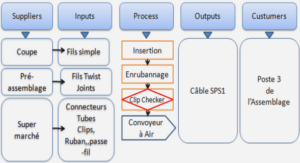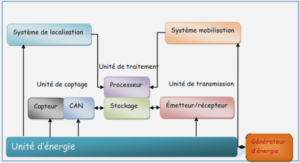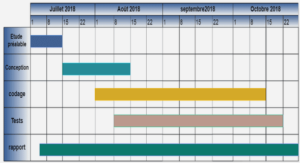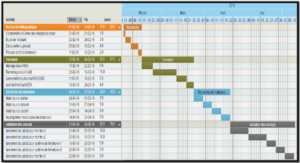Crown light environments and photosynthetic capacity
Poplar and willow utilization in Canada
There is growing interest in hybrid poplar and willow production under short-rotation forestry (SRF) management across Canada. First, their rapid growth rate can produce pulp fibre within a relatively short-rotation period of fewer than 10-12 years (Thomas et al., 2000). This can secure fibre sources to satisfy future needs for the Industry. Second, the high productivity of SRF crops provides renewable bio-energy and biofuel products that are increasingly used as a substitute for fossil-fuel based products. SRF crops are expected to revitalize the rural economy by providing a potential source of revenue for woodlot owners and employment opportunities. Bio-energy products from SRF may also be environmentally effective to counteract a growing concem over global C02 emissions; As photosynthesis sequesters carbon from atmospheric C02 in tree biomass, SRF crops can contribute to reduce global C02 emissions as carbon-neutral energy sources (Weih, 2004). Third, the fast growth of hybrid poplar crops can produce high-value lumber products within a shorter rotation period (15-30 years) compared to traditional forest trees such as spruce (Picea spp.), which matures after 40-50 years (Weih, 2004).
Poplars and willows are also used for the purpose of environmental protection; Phytoremediation using hybrid poplars and willows is applied to reduce pollutant concentrations at contaminated mine sites, landfills, and oil sands because of their high absorption capacity ofheavy metal ions (Isebrands and Kamosky, 2001). Hybrid poplars and willows are also planted in riparian buffer areas to provide soil stability as well asto protect water sources by keeping potential pollutants from entering water bodies (Isebrands and Kamosky, 2001 ). Wh en planted as shelterbelts ne ar dairy, hog and poultry facilities, they can provide a variety of benefits, including important ecosystem habitats for many species, flora and fauna biodiversity, and greatly diminishing livestock stress by providing shade and protection from hot winds (Isebrands and Karnosky, 2001).
Breeding and selection of Populus clones
In Canada, most bioenergy willow plantations are still under experimental phase and the majority of applications are used for environmental applications (Derbowka, 2012). On the other hand, hybrid poplar clones have been exclusively managed for the purpose of supplying pulp fibre or logs for engineered wood products (Derbowka, 2012). There were selection and breeding programs for hybrid poplars supported by companies such as Ainsworth Engineered Canada LP in Alberta, Alberta-Pacifie Forest Industries in Alberta, Kruger Products Limited in British Columbia and by two go v emmental organizations, the Provincial Ministry of N atural Re sources and Wildlife in Quebec and the Agri Environment Services Branch (AESB) in Saskatchewan (Derbowka, 20 12). The se programs evaluated hybridization of poplar species including Populus deltoides, P. balsamifera, P. maximowiczii, P. trichocarpa, and P. nigra and hybridized aspen including P. alba x P. grandidentata and P. tremula x P. tremuloides. The breeding and selection processes consist of making numerous crosses of promising native and introduced species, which may show useful effects of heterosis to maximize productivity. With respect to heterosis in SRF, clones should be selected based on fast growth rates despite high plant density, disease and insect resistance, and local site adaptability ( e.g., cold and drought tolerance).
Effects of spacing
Response to tree spacing is an important determinant as it is directly related to plant yield. Numerous Populus species have been shown to acclimate well to high intensity of plant competition (0.5-3 rn spacing between the trees), contributing to higher productivity per hectare during early growth periods (e.g., Larocque, 1999; Proe et al., 2002; Benomar et al., 2011). Larocque (1999) reported that decreased spacing from 1.5 to 1.0 rn increased biomass production per hectare by 15 % for hybrid poplar DN-74 (Populus deltoides x P. nigra) after 4 years in Canada. Proe et al. (2002) also reported an increase in productivity of poplar and aider by 56 % wh en tree spacing was reduced from 1. 5 to 1.0 rn after 5 years of plantation establishment in central Scotland. However, appropriate plant spacing largely depends on the desired end product ( e.g., timber or energy). Pronounced increases in biomass production under close spacings are largely related to capacity of trees to physiologically and morphologically acclimate to intensive tree competition where canopy occupancy would not cause crown-base recession (Bergkvist and Ledin, 1998; Fang et al., 1999; Benomar et al., 2012).
Trees increase photosynthetic rate under wider tree spacings as they can intercept more solar radiation. High irradiance conditions increase the portion of nitrogen (N) content to leaves (Evans and Poorter, 2001 ). Higher leaf N content is primarily used to produce Ribulose-1,5-bisphosphate carboxylase oxygenase (Rubisco) that is well correlated with photosynthetic capacity (Seemann et al., 1987). Leaves grown in high light conditions also have a higher light-saturated photosynthetic capacity per unit leaf area than leaves grown in low light conditions (Kozlowski and Pallardy, 1997). Although the decrease in spacing reduces incoming light levels and associated leaf N content by competition between the trees, faster-growing plants can acclimate to close spacing by increasing specifie leaf area (SLA: leaf area/leaf biomass) for maximizing net photosynthesis along the gradient of light conditions (Benomar et al., 2011). The increase in SLA contributes to 1) light interception of the foliage by expanded leaf are a and light transmittance by decreased leaf thickness (Vile et al., 2005); 2) reducing N allocation to leaf construction costs, such as producing cell walls, but increasing N allocation to thylakoids and chlorophyll and hence light absorption (Evans and Poorter, 2001; Feng et al., 2008); and 3) lowered light compensation points (Kozlowski and Pallardy, 1997). Thus, these leaves can adjust rapidly to short periods of irradiation under shaded conditions through efficient photosynthetic induction such as fast stomata opening and high electron transport at low photon flux density (Kozlowski and Pallardy, 1997). As a result, the increase in SLA under intensive tree competition would improve light-and nitrogen-use efficiency for photosynthesis for maximizing carboxylation capacity and consequently increase biomass productivity (Feng et al., 2008; Benomar et al., 2011; 2012).
More productive or superior trees under crowded conditions should have increased slendemess ratio (SR: stem height/DBH or root collar diameter) for the efficient development of stem length as spacing decreases (Debell et al., 1996). The increase in stem length can allow plant leaves to have more light in the upper crown under high competition, resulting in having longer (indeterminate) shoots with more foliage at the top of crowns (Dickmann, 2001). These sun leaves would play a vital role in the partitioning of carbohydrates to tree growth (Kozlowski and Pallardy, 1997). It is also likely that trees with longer stem length would produce more sylleptic branches with the increase in leaf area, which increases canopy size and then total shoot biomass (Marron et al., 2006). Thus with these adaptations, superior plants could improve photosynthetic crown capacity under conditions ofhigh competition.
It is thought that a decrease in spacing intensifies root competition and that trees allocate more carbon belowground to compete for limiting resources (Litton et al., 2003). Thus, the trees would increase their root-to-shoot ratios (RSR) as spacing decreases. However, su peri or trees may rather increase density and longevity of fine roots characterized by an enhanced rate of N uptake per unit root mass in response to competition (Casper and Jackson, 1997). Therefore, efficient N uptake would allow plants to allocate more N to rapid shoot growth relative to growth of roots (Litton et al., 2003). As a consequence, superior trees could even reduce RSR even under close spacmgs.
Close spacing may also contribute to suppressing the competing ground vegetation, due to the accelerated canopy closure (Weih, 2004). In boreal regions, poplar trees are reported as being very sensitive to belowground competition where native weeds are well adapted to the growing conditions (Bowersox et al., 1992; Labrecque et al., 1994). As a result, inter-specifie competition by weeds often limits stand productivity of poplars and willows for a longer period in boreal regions (Weih, 2004). Therefore, close spacing appears to be more advantageous in boreal regions in terms of producing large biomass yields as well as minimizing the use of herbicides. However, intense inter-plant competition may increase the risk of damage from pests and diseases due to plants being subjected to greater stress at doser spacing (Mitchell, 1995).
Nitrogen effects
Among environmental factors that affect tree growth, fertilization, particularly N availability, is also an essential factor as trees require a large quantity of nitrogen (N) for growth. However, boreal forest regions of Canada are characterized by low mineralization rates (Larsen, 1980). These sites could not generally meet the high nutrient requirements of hybrid pop lars. Therefore, N supply pla ys a decisive role in attaining high productivity. As most of the N is distributed to the photosynthetic apparatus (Kozlowski and Pallardy, 1997), the increase inN level would increase the number and size of leaves by enhancing leaf photosynthetic capacity (Evans, 1989). As a result, the increase in N would le ad to an expansion of the crown (Ceulemans et al., 1990). N fertilization would also delay the rate of leaf maturation, which allows plants to expand more leaf area during the growing period (Kozlowski and Pallardy, 1997). On the other hand, low N availability would accelerate leaf senescence and reduce canopy size (Kozlowski and Pallardy, 1997). Studies reported that the growth response to N varies among species and their hybrids (Guillemette and DesRochers, 2008; van den Driessche et al., 2008), primarily due to their different patterns of N partitioning into leaves along the canopy light gradient (Field, 1983). Speciesspecific information is required to assess nitrogen-use efficiency for plant growth.
The effect of N on biomass production can be modified by various factors; Wh en native soil fertility is high, N fertilization is less effective to increase tree growth (Guillemette and DesRochers, 2008). N fertilization would also be less effective on finer textured soils such as clay, clay loam, and silty clay loam, due to poor aeration and drainage (Dickmann and Stuart, 1983). These soils create saturated and waterlogged conditions easily, which starve the root system of oxygen and cause drought-like symptoms (Dickmann and Stuart, 1983). Consequently, nitrogen-uptake capacity per unit root mass would decrease under these heavy soils. Soil pH also affects the effect of N on tree growth; The increase in soil pH with N03 fertilization would decrease the rate of phosphorus (P) uptake, causing inhibition of tree growth, net photosynthesis, and stomatal conductance (Des Rochers et al., 2007). Lastly, the effect of N would be dependent on the balance with other nutrients; For example, a recent study revealed that N only promoted the sensitivity of hybrid poplars to drought-stress and adding P was required to withstand this effect (Des Rochers et al. , 2006). Potassium (K) applied with P and N would reduce mortality rate by increasing resistance to diseases (Guillemette and DesRochers, 2008).
Growth-determinant information
An efficient approach is required to accelerate the selection process as the availability of new hybrid poplar or willow clones increases. Conventional selection methods have been based on the comparison of growth performance of new clones usmg biomass or volume production or tree growth under low stand density. As a consequence, this experimental approach requires considerable time and investment for the selection of superior clones. To minimize time and cost, it is beneficiai to identify the physiological and morphological characteristics of species leading to fast growth, such as crown architecture, root development, and photosynthetic efficiency offoliage under high competitive conditions. This growth information would provide clone-specifie acclimation patterns to competition at the relatively early stage after experimental establishment, thereby achieving early clone selection based on desirable morphological and physiological traits. Thus, in addition to saving time for the selection, this can also end up reducing associated silviculture costs.
General characteristics of species used in this study
Poplars
P. balsamifera (balsam poplar, Tacamahaca section) is primarily a species of boreal climates (Dickmann, 2001 ). Therefore, hybridization with this species is expected to show high resistance to low temperatures. In Quebec, although balsam poplar could show varied degree of resistance to Septoria canker, it seems more resistant than either P. maximowiczii (Japanese poplar, Tacamahaca section) or P. trichocarpa (black cottonwood, Tacamahaca section) (Newcombe et al., 2001). Also the high capacity of balsam poplar to regenerate vegetatively from roots and buried branch fragments (cuttings) could achieve the ease propagation of its hybrids (Dickmann, 2001).
P. deltoides (eastern cottonwood, Aigeiros section) is distributed in eastern and midwestern US and southern Canada (Dickmann, 2001 ). Root development of eastern cottonwood is generally poor so that it is necessary to hybridize with species that have better rooting capacities (Eckenwalder, 1996). Eastern cottonwood has been reported to show high resistance to canker disease in southern Quebec (Dickmann, 2001). Clone 1081 (P.balsamifera x P. deltoides, P. x jackii) is commonly planted in the Canadian prairies and showed a high relative growth rate of stem biomass of 8.99g/day/g x102 compared to 8.71 g/day/g x l02 for clone DN2 (P. deltoides x P. nigra) in the first 45 days after planting, with higher net photosynthesis rate per unit leaf area (Tschaplinski and Blake, 1989). However, P. x jackii (Northwest) is known for high susceptibility to poplar bud gall mite and Melampsora rust (Eckenwalder, 2001 ).
SHORT-TERM GROWTH AND MORPHOLOGICAL RESPONSES TO PLANT
DENSITY AND NITROGEN A V AILABILITY IN HYBRID POPLAR AND
WILLOW CLONES
There is growmg interest m short rotation forestry (SRF) plantations of hybrid poplars and willows on agricultural or degraded forest lands across Canada. Woody crop biomass for bioenergy may potentially 1) enhance energy security as a fossil fuel substitute, 2) offset greenhouse gases produced by the use of fossil fuels, and 3) revitalize rural economies by increasing employment opportunities in the forest industry and providing a locally available and renewable energy source (Messier et al., 2003; Tan et al., 2008; Levin et al., 2011). However, for economically feasible SRF plantations, silviculture costs (e.g., site preparation and maintenance costs) must be reduced and biomass production must be maximized by using the best available clones (McKenney et al., 2011).
Experimental design and measurements
The research trial took place in a greenhouse at the Laurentian Forestry Centre in Quebec ( 46°46’N, 71 °16’W). The experimental design was set up as an incomplete block design with seven hybrid poplar clones (915319; Populus maximowiczii x P. balsamifera, 747210; P. balsamifera x P. trichocarpa, 1081; P. deltoides x P. balsamifera, 2782; P. tremuloides x P. tremula, DN-74; P. deltoides x P. nigra, NM06; P. maximowiczii x P. nigra, and Walker; P. deltoides x P. petrowskyana) and five willow clones (HAN-AS; Salix amygdaloides, LEV-D5; S. discolor, SHEE9; S. eriocephala, LAF-14; S. interior, and TCH-N4; S. nigra). Within each repetitive block (growing period of 13 weeks ), each combination of 6 clones, 2 fertilization levels [20 and 200 j.lg i 1 of nitrogen (N)] and 3 spacings [20 (20 x 20), 35 (35 x 35), 60 (60 x 60) cm] was assigned to 36 plant pots, which were randomly positioned in the greenhouse. The plant pot sizes were 1 x 1 x 0.4 rn for the 20 cm spacing, 1.4 x 1.4 x 0.4 rn for the 35 cm spacing, and 1.2 x 1.2 x 0.4 rn for the 60 cm spacing. Each combination of clones, spacings and fertilizer levels was replicated 3 times, once in each of 3 different blocks. For the 20 and 35 cm spacings, 16 cuttings of 10 cm in length were planted per plant pot and, while 5 cuttings were planted per pot for the 60 cm spacing. Trees from clone 2782 (hybrid aspen) were 20 cm long rooted plants from in-vitro culture as aspens are difficult to root from cuttings (Stanturf et al., 2001 ).
GENERAL CONCLUSION
The pnmary objective of this study was to investigate the morphological and physiological characteristics leading to superior growth performance of clones under high plant competition and different nitrogen (N) levels. Through this study, I answered two specifie questions: Firstly, ifthe decrease in spacing caused variations in growth performance of clones under high or low N level, what were the morphological and physiological characteristics that lead to greater growth performance? Secondly, how much did soil N availability reduce the negative impacts of competition on growth? The hypotheses corresponding to the first question were that although a decrease in spacing would reduce available resources such as light (PAR) and nutrients, clones with superior growth performance under competition would 1) show no significant changes in leafless aboveground biomass per tree (AGBT), 2) have greater AGBT per unit increase in LA and leaf N concentration (Narea), 3) exhibit greater amounts of leaf area (LA) and greater amount of LA per unit plant biomass (LAR), 4) have greater slendemess ratios (SR), 5) allocate more biomass to stems compared to roots, 6) show no significant changes in Pn under reduced spacing, 7) have greater SLA, and 8) greater photosynthetic N-use efficiency under ambient light conditions (PNUEarnb). We also hypothesized that negative effects of competition, such as crown recession or decreased RCD and LA, would be reduced with N fertilization with 1) greater LA and 2) greater P n associated with greater leafN content per unit LA (Narea).
|
Table des matières
CHAPTERI GENERAL INTRODUCTION
1.1 Poplar and willow utilization in Canada
1.2 Bree ding and selection of Populus clones
1.2.1 Effects of spacing
1.2.2 Nitrogen effects
1.2.3 Growth-determinant information
1.3 General characteristics of species used in this study
1.3.1 Poplars
1.3.2 Willows
1.4 Objectives
CHAPTER II SHORT-TERM GROWTH AND MORPHOLOGICAL RES PONS ES TO PLANT DENSITY AND NITROGEN A V AILABILITY IN HYBRID POPLAR AND WILLOW CLONES
2.1 Abstract
2.2 Introduction
2.3 Materials and methods
2.3.1 Experimental design and measurements
2.3.2 Data analyses
2.4 Results
2.4.1 Growth development
2.4.3 Biomass productivity and allocation
2.4.4 Morphological characteristics of superior clones
2.5 Discussion
2.6 Conclusion
2.7 References
CHAPTER III SHORT-TERM PHOTOSYNTHETIC ACCLIMATION OF HYBRID POPLARS AND WILLOWS TO DIFFERENT PLANTING DENSITIES AND NITROGEN A V AILABILITY
3.1 Abstract
3.2 Introduction
3.3 Materials and methods
3.4 Results .
3 .4.1 Crown light environments and photosynthetic capacity
3.4.2 Specifie leaf area (SLA) and leaf nitrogen concentration (Narea) .
3.4.3 Leaftrait relationships
3.4.4 Characteristics of superior clones
3.5 Discussion
3.6 Conclusion
3. 7 References
CHAPTER IV GENERAL CONCLUSION
![]() Télécharger le rapport complet
Télécharger le rapport complet






